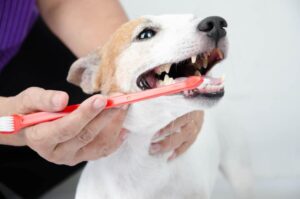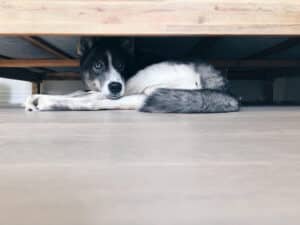We are here to answer one of the most important questions you will ever ask in life: does my dog dream?
Scientists believe that in fact, dogs do dream – and what is more, they dream similarly to us! That would mean that they replay moments of their day while they’re asleep.
In 2001, MIT researchers trained rats to run a maze while measuring their brain activity. Later they measured the brain activity while they were in rapid-eye-movement sleep – the same sleep cycle in which humans experience dreams. They found that the brain activity was the same as when the rats were running the maze, leading researchers to conclude that the rats were dreaming about the maze they ran earlier in the day.
Matthew Wilson of MIT’s Center for Learning and Memory, said, “No one knew for certain that animals dreamed the way we do, which can involve replaying events or at least components of events that occurred while we were awake. We looked at the firing patterns of a collection of individual cells to determine the content of rats’ dreams. We know that they are in fact dreaming and their dreams are connected to actual experiences.”
Since rats are intellectually less complex than dogs and cats, researchers can make the assumption that dogs and cats dream too, just like rats.
So, how can we tell that dogs are dreaming? The Sleep Foundation reports that dogs will often bark or twitch their legs while they’re in REM sleep. But sleeping dogs may also dream according to their breeds!
AKC Family Dog columnist, Stanley Coren, explained to Psychology Today, “Researchers found that a dreaming Pointer may immediately start searching for game and may even go on point, a sleeping Springer Spaniel may flush an imaginary bird in his dreams.”
Coren advises curious owners who want to know if their dogs are dreaming, just need to start watching them about 10 to 20 minutes after they fall asleep. If you can see their eyes moving behind their eyelids, they’ve started dreaming.
Now the frequency with which dogs dream depends on the size. According to Coren, small dogs, such as Chihuahuas, tend to dream more often during one night – with a new dream occurring every ten minutes – as compared to bigger dogs. Vetstreet further reports that both puppies and senior dogs dream more often than middle-aged dogs.
So, next time you notice your dog sleeping, follow the old saying, “let sleeping dogs lie,” as disrupting their sleep during REM can be very startling – just think how you feel. Startling a dog during their sleep can potentially result in an unintended bite.











